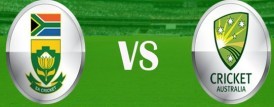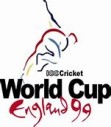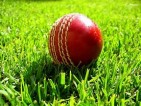A look back at South Africa’s 2012/13 Test tour of Australia
Marco Trevisiol |
In the leadup to South Africa’s 2012 Test tour of Australia, there was a sense the home side was well prepared to reverse the result of South Africa’s last visit in 2008/09 where they provided Australia’s first home Test series defeat for 16 years.
To be sure South Africa would be a tough side to overcome. Their Test record over the previous couple of years had been one of excellence culminating in a convincing Test series win in England in mid-2012. Their record of not losing an away Test series in over six years was the envy of all other sides.
But this Australian side had a sense destiny about them. Just a couple of seasons before during the 2010/11 season they’d hit arguably their lowest point since World Series Cricket with a 3-1 home Ashes defeat. That scoreline didn’t do the humiliation justice as after only suffering one innings defeat from 2000 to 2009, they suffered three losses by an innings within a couple of months.
By September of 2011 the captain (Ricky Ponting), chief selector (Andrew Hilditch) and coach (Tim Nielsen) all departed their positions with a major inquiry also conducted into Australian cricket.
Michael Clarke was installed as captain which caused a tumult of its own as he was a maligned character within Australian cricket. He’d had physical altercations with teammates, wasn’t popular amongst Australian cricket fans (he’d been booed when he came out to bat during a 2010/11 ODI) and couldn’t buy a run during the 2010/11 Ashes series.
But from these unpromising beginnings, Clarke had forged a new era with verve and confidence. His attacking and inventive captaincy had been like a breath of fresh air and his batting had gotten back to his best, culminating with a remarkable 329 against India. The team results turned around faster than anybody had envisaged with away wins in Sri Lanka & the West Indies and a 4-0 demolition of India being high points.
Things had turned around so fast for the Australian Test team under Clarke that a Test series win against South Africa would give them the No. 1 ranking.
Unfortunately the opening Test at the Gabba was ruined by the notoriously erratic Brisbane weather with the entire 2nd day washed out. But when the sides did get to play an entertaining and absorbing match resulted.
South Africa dominated Day 1 reaching 2/255, being led by the the ageless and ever-reliable Jacques Kallis and Hashim Amla continuing on his form that saw him score a triple-century just months before. They both reached their respective centuries and Australia’s well-credentialed pace attack of Ben Hilfenhaus, James Pattinson and Peter Siddle which had done so well over the previous 12 months seemed overawed on this occasion.
With a full day already lost it appeared South Africa were already safe from defeat but Australia bounced back superbly for the rest of the match. They did well with the ball on Day 3 to have South Africa dismissed for 450 but the real fightback started with the bat. Late on Day 3 Australia looked in all sorts of trouble as they slumped to 3/40 with South Africa’s exceptional pace attack led by Dale Steyn seemed prime to skittle Australia and perhaps even enforce the follow-on.
But they hadn’t anticipated bowling to Michael Clarke who was to reach heights with the bat in this series that even his greatest admirers didn’t think possible. He decimated an excellent bowling attack with ease, remaining undefeated on 259 and rarely looking in trouble. With centuries from opener Ed Cowan and the ageless Mike Hussey, Australia had counterattacked and turned what looked a grim position late on Day 3 to where by early on Day 5 they were the only side that could win it.
They declared 115 runs ahead (with only 5 wickets lost) and while the weather and a flat Gabba pitch was always going to see the match end in a draw, that South Africa had to grimly bat out time was another psychological boost to Australia. The lively bowling of Pattinson in the latter stages of this match suggested they had the attack to take the wickets that would back up the runs that Clarke & Co could clearly provide.
Australia batted first in the 2nd Test in Adelaide and remarkably enough their batting effort was like a hyper version of their Gabba batting performance.
Again they started off badly to be 3/55 with Ponting’s dismissal where he fell flat on his face while being bowled a sure sign that his days as a Test bat were numbered. But that mattered little once Clarke took over as he destroyed the South African bowling attack in a manner rarely seen at Test level. His stats of scoring 230 at a strike rate of almost 90 is impressive enough, but it was the way he played that stood out with his masterful use of his feet against the spin and ability to hit through the line to good-length balls from the pacemen. With able support from Mike Hussey, he ensured Australia racked up an astonishing 482 by stumps on Day 1 and score 550 with plenty of time to take the game.
South Africa’s cause was further hampered with Jacques Kallis incapacitated with an injury while bowling but they fought hard to reach 388 with captain Graeme Smith scoring a century and Kallis coming in low down the order to score a half-century.
But Australia was still in the box seat and when they declared their 2nd innings they had well over 4 sessions to bowl South Africa out. And when South Africa slumped to 4/45 early in the final session, it seemed even faintly possible that Australia could wrap up the match a day early.
But South Africa hadn’t gone undefeated in away Test series for over 6 years through pure luck; they were an exceptionally tough side and probably their greatest feature was their ability to salvage match situations that other sides would’ve given up on. What followed for the final 4 sessions of the match was a remarkable display of defensive batting very rarely seen in modern Test cricket.
This was best exemplified by AB De Villiers who was famous as an enormously talented and extravagant strokemaker in all formats. Putting away his ego and attacking strokes, he focussed on total defence and occupied the crease for over 4 hours in scoring just 33.
But the most remarkable performance by South Africa in this inning was by Faf Du Plessis who followed up a 1st innings 78 with an undefeated 110 in over 7.5 hours. That he was doing this on Test debut made it all the more admirable. Because of these efforts and despite a typically whole-hearted bowling effort from Peter Siddle, South Africa managed to scramble a draw with two wickets in hand.
While the Test series was decided in the 3rd and final Test in Perth, in truth the decisive Test of this series was the 2nd Test in Adelaide. In more ways than one to only get a draw was a devastating result for Australia as they’d played excellent cricket with their astonishing opening day batting breaking many records. While they were unlucky to lose Pattinson through injury, 148 overs should’ve been more than enough time to bowl South Africa out over the final two days. The disappointing final day performance of their main spinner Nathan Lyon on a pitch and match situation where he should’ve prospered was pivotal as well.
Australia not only had to deal with the mental letdown of failing to win a match they should’ve won, but they literally lost their entire pace attack for the Perth Test through a combination of injury and not being able to overcome the enormous workload they shouldered in Adelaide. Plus they were dealing with Ricky Ponting announcing Perth would be his final Test match and the inevitable emotion and public expectation that came with that.
So while Australia started off well on the opening day of the Perth Test and dismissed South Africa relatively cheaply, when they collapsed to 6/45 early Day 2 they must’ve known they’d run out of chances and their performance fell away rapidly. South Africa’s leaders in Steyn, Smith, Amla & De Villiers all had grand matches and helped ensure their side won the match by a large margin within 4 days; once again South Africa had triumphed against the odds away from home in a Test series.
For Australia, what seemed like a series that looked like for much of it a triumph and reclamation of the No. 1 ranking, instead it was the beginning of a period of tumult. A disastrous tour of India on and off the field a few months later would eventually see Mickey Arthur sacked and Clarke quit as selector and his power and influence around the team be reduced.
In hindsight, the South Africa series was the end of Clarke’s peak period as a player and captain. He would rarely again reach the heights he consistently obtained as a batsman during the 2011-12 period. And as a captain while he would have notable triumphs during the 2013-15 period, the second half of his leadership reign would be a much more tumultuous and difficult one as disagreements with selectors and coach Darren Lehmann over issues like fitness and selections became more regular and even became public on occasion.
The control and power Clarke had on and off the field in the first 18 months of his captaincy reign would be little more than a wistful memory by the time he retired after the 2015 Ashes.





Leave a comment